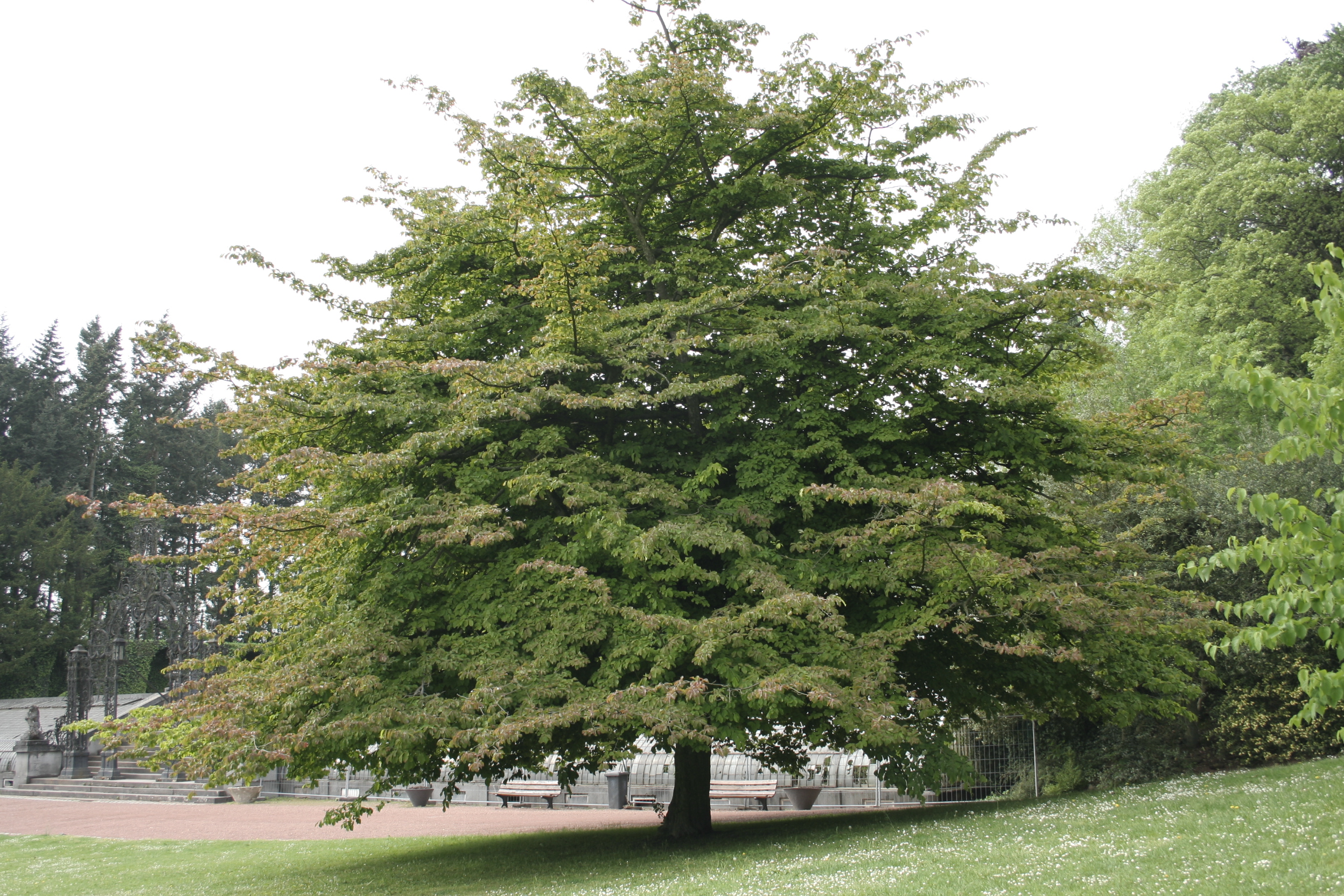- Parrotia persica
image_width = 240px
image_caption = Specimen planted in Belgium
regnum =Plant ae
divisio = Magnoliophyta
classis =Magnoliopsida
ordo =Saxifragales
familia =Hamamelidaceae
genus = "Parrotia"
genus_authority = C.A.Mey.
species = "P. persica"
binomial = "Parrotia persica"
binomial_authority = (DC.) C.A.Mey."Parrotia persica" (Persian Ironwood) is a
deciduous tree in the familyHamamelidaceae , the sole species in the genus "Parrotia" but closely related to the genus "Hamamelis" (Witch-hazels). It is native to northernIran , where it is endemic in theAlborz mountains.It grows to 30 m tall and 8-15 m broad, with a trunk up to 150 cm diameter. The
bark is smooth, pinkish-brown flaking/peeling to leave cinnamon, pink, green, and pale yellow patches in a similar manner to plane trees. The leaves are alternate, ovoid, often slightly lop-sided, 6-15 cm long and 4-10 cm across, with a wavy margin; they are glossy green, turning a rich purple to brilliant red in autumn colours.The
flower s are somewhat similar to Witch-hazel flowers but dark red; they are likewise produced in late winter on bare stems, but differ in having only four rounded sepals with no petals; thestamen s are however fairly conspicuous, forming a dense red cluster 3-4 mm across. Thefruit is a two-parted capsule containing twoseed s, one in each half.Cultivation
It is cultivated as an ornamental tree for its stunning autumn colour and the smooth, patterned bark. Several
cultivars have been selected for garden planting:
*'Horizontalis': semi-weeping, wide-spreading horizontal branching pattern.
*'Pendula' (Kew Form): Compact, weeping, quite graceful
*'Select': Young leaves have purple margins, otherwise same as species
*'Vanessa': Upright, columnar habit
Wikimedia Foundation. 2010.

